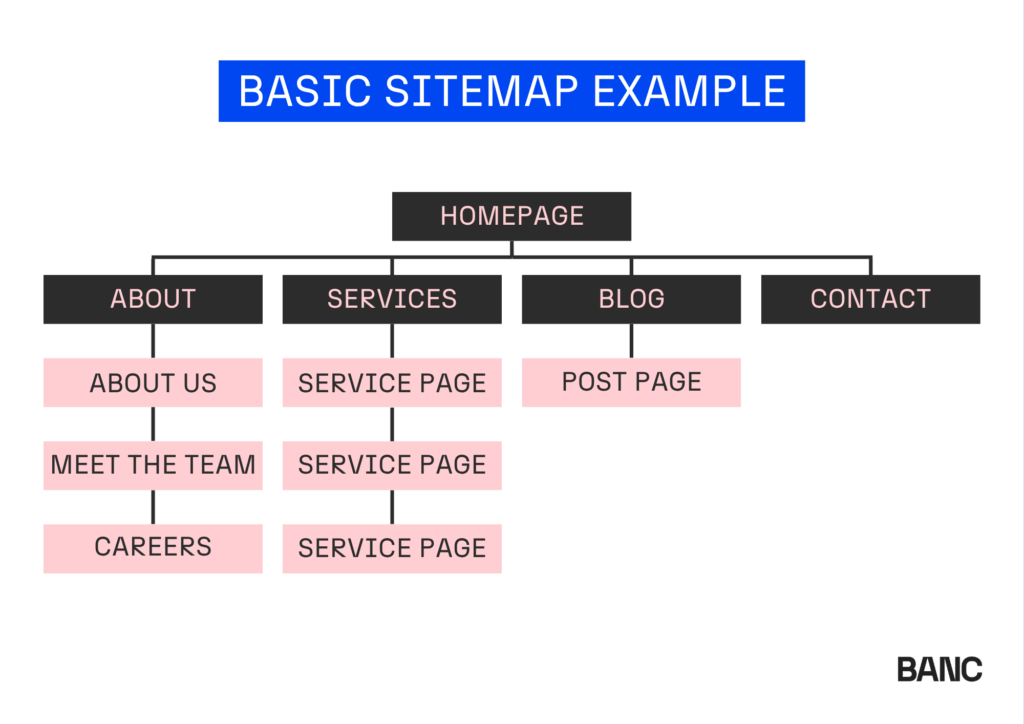How to Write a Website Requirements Document [with Example Templates]
Planning to redesign your website? Or perhaps you need a completely new one? Whichever it is, you’ll need a website requirements document, outlining everything you need from your web development team to communicate your vision and steer you towards success.
Here, we guide you through the process of pitching a new web project, with advice on how to write a detailed website requirements document. We’ve also included a free template for you to download, which should simplify the writing process.
Quick Navigation
- What is a Website Requirements Document?
- How to write a website requirements document
- Download your free website requirements document template
- Tips for writing your website requirements document
What is a website requirements document?
A website requirements document outlines the characteristics, functions and capabilities of your website and the steps required to complete the build. It should include technical specifications, wireframes, functionality preferences and notes on individual design elements.
A good website requirements document should do the following:
- Set out the functional requirements of your website, including the sitemap, design and user experience
- Maintenance and support requirements when the site is set live
It should also be:
- Specific and focused; your intentions for the new site should be clear
- Considered and complete, with nothing missed or overlooked
- Prioritised by key objectives, with distinct deadlines and milestones outlined
This guide will help you create a website requirements document that meets the criteria outlined above, along with a downloadable statement of work template to get your project started.
Why is a website requirements document important?
A well-written website requirements document can help avoid scope creep, keep miscommunication at bay and prevent costly revisions throughout the web project. A project is only ever as good as its plans, so the more technicalities, functionality requirements and design elements are smoothed out beforehand, the more clarity your developers and designers will have about the work they’re undertaking.
How to write a website requirements document
Ready to compile the information needed for your next web build project? From content to design, here’s everything you should be including in your website requirements document.
Content and site structure
This is where you pin down the ‘information architecture’ (IA) of your website – from its structure to the type of content you plan to use across the site map. A provisional site structure can help give developers a clear vision of what you hope to see from your site, but it may change later as budget constraints or technical requirements come into play.
Site map
Begin by creating a site map for your website. This takes the form of a ‘tree’ chart displaying the hierarchical structure of your website’s pages. We’ve included an example of what a typical site map might look like below:

The trick to creating an effective site map is to consider your audience and analyse quantitative data which demonstrates the limitations and shortfalls of your current site. From there, you can look to improve the user journey and experience offered by your website’s navigation and structure; insights which should influence your new site map.
Taxonomy creation
Outlining a taxonomic structure for your website is an excellent way to provide a better experience for the user, whilst also ensuring optimum performance in search results. Creating a classification system for your pages will make your site easier to navigate, and therefore more attractive to users and search engines.
When creating a site-wide taxonomy, consider the following:
- What does the user want from your website?
- What is the purpose of the content? What are you hoping to achieve (sales, engagement etc.)?
- What are users looking for when they visit your site? This will inform how pages are classified; for instance, product or service pages would typically be classified ahead of informational pages on an e-commerce website
Here’s an example of what we mean by a website taxonomy:
Say you’re building a new website for a record shop. One taxonomy could be ‘genres’, with ‘rock’, ‘folk’, ‘soul’, etc. leading away from the main ‘genres’ page. This may not be a site-wide taxonomy, but may refer only to a specific type of content on your site (informational content, for example).
Building taxonomies for your site can help steer the overall structure, ensuring that the foundations of an easily navigable site are in place from the earliest stages of the build.
Page template wireframes and mock-ups
Do you have a clear vision of how you’d like specific pages on your website to look? Don’t be afraid to include them in your website requirements document. Normally, developers will create templates for each type of content page on your site, be it the homepage, product/service page, blog page or contact page, so focusing on creating mock-ups of these templates can be a great steer towards building a site you’re happy with.
Design elements
How much information you include in this section of your website requirements document depends on two factors: whether you already have a design for your site (including specific style elements) or if design work is being incorporated into the project.
Below, our interactive guide can help you determine what kind of collateral to share with developers depending on whether a design exists for your site or is required as part of the project.

Design work exists
- Annotated PDFs
- Flat image files
- Invision project links and notes
- Sketch files
- PSD files
- A style guide for your brand
- Brand guidelines
Design work is part of the project
- Brand guidelines
- A style guide for your brand
- Examples of other sites, and what you like about them
- Analysis of competitor sites
- Relevant print media which can inform the digital design
Download Your Free Website Requirements Document Template
Functionality and technical specifications
This is where you list the desired functionality of your website – highlighting what you want it to do. It’s also an opportunity to outline any third-party integrations your site requires, such as an interface connected to your live Instagram feed.
From a functionality perspective, it’s critical that you understand what your site is for and what users expect from it; that’s why audience research and customer personas are so important. Functional elements should align with the type of content and pages in your site structure, and should be geared towards streamlining the user journey towards your desired KPIs.
Here are a few examples of technical specifications you may want to list in your website requirements document:
- E-commerce capabilities – payment gateways, shopping cart, ‘save for later’ options, stock checker
- Multi-lingual options, allowing users to toggle between different default languages
- Social media integration
- Contact or sign-up forms
- SSL certification
- A responsive, mobile-ready version of your site – for total usability across all devices
Non-functional considerations
Aside from the technical requirements of your site, there are several non-functional elements to consider and communicate to developers. Here are some of the things you may want to list in this section, depending on the needs of your site:
- Accessibility – Accessibility is an integral part of all web design, and the WCAG guidelines can help ensure your site is usable by all. However, if your site has any specific access requirements or is frequently used by a certain type of user (e.g. children or the elderly), this should be communicated to developers
- Security – Does your site need to meet specific security legislation, such as the PCI Standard? Tell your developers here
- Legal – If your site has specific compliance or legal requirements, or if customers need to accept certain terms and conditions, you should list these here. An example of this is a date of birth gate for legal-age sites, such as alcohol or +18 video games sites
- Page load speed – Given page load speed is one of the top SEO ranking factors, it’s critical that you emphasise its importance to developers – particularly if you’re running an e-commerce site
- Hosting – Do you already have a hosting platform you’d like your site to sit on? List it here
- Browsers and devices – Which browsers and devices do your current visitors and customers use? And which platforms, if any, would you like to target? Listing the browsers and devices you want your site to perform well for will help developers test and refine your site more effectively
- Maintenance and support – Will your website require ongoing maintenance and support to maintain security and ensure it continues performing at its best? Inform your developers of necessary maintenance, as well as any limitations you may have in maintaining the technical aspects of the site
Tips for writing your website requirements document
Your website requirements document will influence many of the ins and outs of the web build project, so it’s important to consider who will be reading it, how it works with other key documentation, and the language used to communicate each requirement. Our top tips will help you make the most of your website requirements document for everybody involved.
Use clear language
It’s best to avoid using jargon or complicated terms in your website requirements document. Remember that team members and stakeholders without design or developer experience will need to understand the document, so it might need to be simplified to some extent.
Collaborate with stakeholders early
The ultimate goal is to get stakeholder buy-in on your project, which is why they should be involved in the creation of your website requirements document from the beginning. A brand owner’s needs and requirements must align with the developer’s vision, so outlining these as clearly as possible early in the process should ensure all parties are working in harmony.
Create a statement of work
Thought about budgets and timescales? While a website requirements document focuses on how the website build will work from a functionality and technical perspective, you’ll still need to consider the overall logistics of the project. A statement of work is also essential, since this will outline everything from the project overview and projected budgets to the goals and deadlines.
At BANC, our development and web design teams are experts at building powerful, user-centric websites that meet your specifications and support business growth for your brand’s future. Click to discover how we can help you with your next web project or call our team today on 0345 459 0558.



